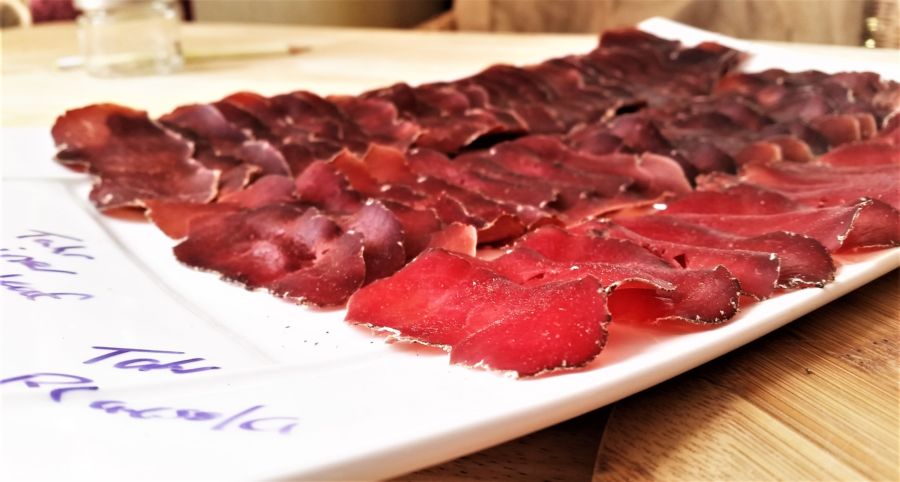Since you got the DIY curing chamber guide I put together, this below is to give you the insider’s perspective dry curing.
Here are some insights into aspects of this craft I’ve learned over the years and thoughts about high-level keys to success for dry curing – some of the salient ideas I guess.
Curing meat is not like any other cooking or food prepping you do in your kitchen.
Don’t get me wrong, I enjoy cooking Italian, Asian styles like Japanese, Vietnamese, Korean, and other bits. Fermentation, pickling, dashi’s, masala’s and confits.
I catch fish, harvest meat, and forage for bits and pieces. I have some preference for food sources that are not too tampered with, or at least I try. Smoking meat I’ve done for years as well, low and slow with charcoal, propane and wood- this stuff is kinda simple compared to dry curing I have found!
There are some tricks with low and slow, but really we are talking about sprinkling on a rub and cooking at a low temperature with wood smoke vapor! (And meat with lots of fat!)
Since I hunt quite alot of game using lean cuts and glorifying the meat was part of my early discovery of meat curing as well. Later on in more recent years, I’ve using tougher stew/cassorle type ‘cuts’ of beef or pork – and dry curing these also can very rewarding.
The spices and ‘waiting’, inspecting and outcomes have kept me interested in dry curing for nearly 20 years…still, at my core, I am fascinated by dry curing whole muscle meat like this.

I am technie-ish-minded, but like to slow down time with meat curing, in this world things move very fast!
The Secret Sauce of Meat Curing
If yoru new around here, I thought it would be nice to give you a head start, about what I’ve learned over the years (as I write this – I’m young-ish @ the baby-faced age of 42 years young!)
So here are the not so talked about ideas around successful meat curing.
- Less is more with spices
- Precision curing
- Approx Drying Environment is OK
- The Slowest Food Around
So I designed my online course around these ideas but also wanted to add a ton of additional and supplement content, so folks could truly tap into making whole muscle charcuterie at home.
Less is More with Spices
Often we think more of something is better, and this relates to the old saying “too much of a good thing is bad”.
With dry curing meat, there is some alchemy (more like science) that happends which intensifies flavor, and at the same time can highlight spice mixes in different ways.
Take the South African biltong (A non-sweet thicker verison of jerky), it traditionally has 2 spices – toasted/dry fried pepper and coriander. Once these spices are ground up, it’s incredible the aroma, umai and flavor they bring to the meat curing.
Spices are sometimes very simple like the ‘confused pork’ I create (paprika and cumin). It’s based on Low and Slow spices, but with a whole muscle dry curing, and it’s phenomenally good.
Precision Curing
The old away of covering something with salt works, but I’ve found often it can lead to varies outcomes with percieved saltiness. I’ve refined the more modern techniques now have thousands of people using my equilibrium curing calculator every month.
Approx Drying Environment is ok
Many engineers, mathematical or detailed thinkers get drawn to dry curing meat for some reason. Something which is slightly challenging with huge payoff and rewards may have something to do with it.
One aspects that I’ve learned is that the environment can have some variability, whether you create a curing chamber area or leave things up to nature.
The Slowest Food Around
I’m fond of the slowness of dry curing whether you make a small dry cured loin that takes maybe a 1-2 months. Or a leg of prosciutto which could take 10-30+ months.
It’s nice to slow down our fast paced lives using this slow (but tasty) process to remind ourselves, not everything goes a lightspeed around us.

